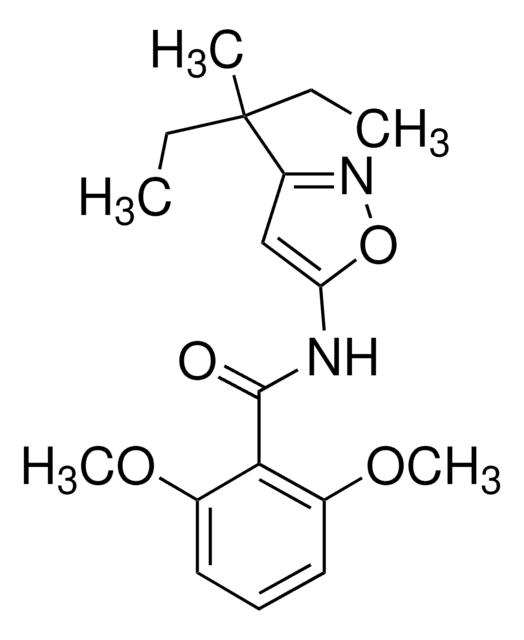01640
Acridine
BioReagent, suitable for fluorescence, ≥97.0% (HPLC)
Scegli un formato
Scegli un formato
About This Item
Prodotti consigliati
Nome Commerciale
BioReagent
Livello qualitativo
Saggio
≥97.0% (HPLC)
P. ebollizione
346 °C (lit.)
Punto di fusione
106-111 °C
107-110 °C (lit.)
Solubilità
ethanol: 0.5 g/10 mL, clear (hot)
carbon disulfide: soluble
diethyl ether: soluble
ethanol: soluble
hydrocarbons: soluble
Fluorescenza
λex 360 nm; λem 417 nm in ethanol
Compatibilità
suitable for fluorescence
Stringa SMILE
c1ccc2nc3ccccc3cc2c1
c1ccc2nc3ccccc3cc2c1
InChI
1S/C13H9N/c1-3-7-12-10(5-1)9-11-6-2-4-8-13(11)14-12/h1-9H
DZBUGLKDJFMEHC-UHFFFAOYSA-N
Cerchi prodotti simili? Visita Guida al confronto tra prodotti
Applicazioni
Risultati analitici
Avvertenze
Warning
Indicazioni di pericolo
Consigli di prudenza
Classi di pericolo
Acute Tox. 4 Oral - Aquatic Acute 1 - Aquatic Chronic 1 - Eye Irrit. 2 - Skin Irrit. 2 - STOT SE 3
Organi bersaglio
Respiratory system
Codice della classe di stoccaggio
6.1C - Combustible acute toxic Cat.3 / toxic compounds or compounds which causing chronic effects
Classe di pericolosità dell'acqua (WGK)
WGK 3
Punto d’infiammabilità (°F)
Not applicable
Punto d’infiammabilità (°C)
Not applicable
Dispositivi di protezione individuale
dust mask type N95 (US), Eyeshields, Gloves
Scegli una delle versioni più recenti:
Possiedi già questo prodotto?
I documenti relativi ai prodotti acquistati recentemente sono disponibili nell’Archivio dei documenti.
I clienti hanno visto anche
Active Filters
Il team dei nostri ricercatori vanta grande esperienza in tutte le aree della ricerca quali Life Science, scienza dei materiali, sintesi chimica, cromatografia, discipline analitiche, ecc..
Contatta l'Assistenza Tecnica.














